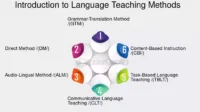ABSTRAK
Artikel ini mengkaji ketertarikan-ketertarikan survei minat mahasiswa terhadap jurnalisme di era transformasi digital, karena kegiatan jurnalistik sangat penting dikembangkan oleh mahasiswa untuk meningkatkan kreativitas mereka di era digital. Teknologi digital membuka peluang yang lebih luas bagi mahasiswa untuk lebih mengenal dan menjalankan aktivitas jurnalistik. Dengan menggunakan metode penelitian berbentuk kuesioner yang disebarkan kepada mahasiswa-mahasiswi perguruan tinggi di Indonesia. Untuk mendapatkan hasil yang efektif, pelaksanaan survei dilakukan secara terstruktur dimulai dari analisis ketertarikan mahasiswa dalam bidang jurnalistik kemudian melakukan study literatur untuk kebutuhan membentuk instrumen kuesioner survei. Dari hasil yang didapatkan, penulis dapat menyimpulkan bahwa jurnalistik mendapatkan antusias yang tinggi, hampir 94% responden tertarik untuk mempelajari jurnalistik. dan 88,7% mahasiswa setuju karna peran jurnalis sangat membantu mereka dalam mendapatkan informasi.
Kata-kata Kunci: Jurnalism; Mahasiswa; Era Digital; Transformasi; Universitas
ABSTRACT
This article investigates university students’ interest in journalism in the digital transformation era, because journalistic activities are very crucial to be developed by students to increase their creativity in the digital era. Digital technology opens wider opportunities for students to get to know and carry out journalistic activities. by using a research method in the form of a questionnaire distributed to university students in Indonesia. To find out what will happen effectively, the survey application is carried out in a structured manner, starting with an analysis of student interest in the field of journalism and then conducting a literature study on the need to form a survey questionnaire instrument. From what has happened, the author can conclude that journalism receives high enthusiasm. Almost 94% of respondents are interested in learning journalism. and 88.7% of students made a unanimous decision because the work of journalists really helped them in getting information.
Keywords: Journalism; University Students’; Digital Era; Transformation; University
INTRODUCTION
Journalistic activities are very important to be developed by students to increase their creativity in the digital era like now. The spread of digital media in this modern era, such as print media, tabloids, magazines, radio, and television, especially the internet, is one manifestation of the era of information and openness. Rahardjo (2011) said that the existence of new media cannot be separated from the rapid development of information and communication technology.[1] This is what students must use to get to know the world of journalism in the digital era like now.
The existence and development of mass media within the scope of students ultimately becomes a dilemma. Related to its position as an organization or dualism, the student press has also become a medium for, by, and for students. Student press, as defined by university press, is a periodical created by and for students at a university. Another definition stated by Prof. DR. D. A. Tisna Amidjaja in his speech, said that the student press is a form of periodical publication managed by students outside the university and for the public interest.[2]
Journalistic activities with the presence of the internet have utilized the internet network to search, process and transmit information or news as a product of journalism. More clearly, the notion of press publishing at universities is supported by the issuance of the Minister of Information regulation number 01/PER/MENPEN/1975, dated November 15, 1975, which explains the five criteria for publishing press at universities, namely: 1) the institution concerned; 2) content-one discipline or several disciplines; 3) the reading environment of the academic community; 4) non-commercial business; and 5) the form of news is internal.[3]
[1] PROMEDIA, Volume Ke-5 No. 1, 2019, Waluyo, Memahami Jurnalisme, 40 – 74
[2] Tisna Amidjaja, “Penerbitan Kampus Mahasiswa” (Pidato dimuat dalam Kedudukan, Fungsi, dan Tugas Penerbitan Kampus yang diterbitkan oleh Departemen Penerangan Republik Indonesia), hal. 50.
[3] 01/PER/MENPEN/1975, dated November 15, 1975
The student press cannot be separated from the participation of students in it. Judging from its nature and characteristics, student press managed by students must reflect student-style reasoning. The context is that the student press is not a political tool, nor is it an arena for agitation. William L Rivers stated that every student publication must follow a serious journalistic approach that has news value for the institution and for life, which is a forum for channeling student expression.[4]
University press for students is said to have a higher degree than general press, so the student press can really be useful for the environment in which the university press is located. Regarding university press for students, Rivers added, “His material is different because he is writing and editing for a small, homogeneous community-a fact that should enable him to speak more meaningfully to the majority of his audience”.[5]
[4] William L Rivers dalam bukunya The Mass Media, Reporting, Writing and Editing
[5] William L Rivers dalam bukunya The Mass Media, Reporting, Writing and Editing
The goal is to play a big role for students in the journalism field in an organization or student agency so that it can manage activities related to it, such as documentation, publications, and even do scientific work. Students must understand what and how good and true journalism is, at least to be able to provide an overview even though information technology and systematic tools of communication media have undergone fundamental changes in the last decade.
The development of journalism makes the writer interested in knowing the truth. Because students who already know about journalism will provide a learning outcome and student interest as a process to support individual skills in studying written forms as information, entertaining travel notes and taking pictures of various things that are in accordance with their activities.
In the research that the author has reviewed from several existing sources, it focuses more on the importance of the press in the world of journalism in universities. While in the research, the author will focus more on the interests and scope of student knowledge about journalism in the era of digital transformation. The author wants to know the interest of students in the world of journalism even though they are outside of journalism students because in the era of digital transformation, knowledge of mass media is very important for students to deepen.
METHODS OF RESEARCH
The article “Survey of Student Interest in Journalism in the Era of Digital Transformation” was conducted using a questionnaire method and using quantitative research theory, which is used as a construct (or variable) idea related to the results of research data, according to a proposition or hypothesis that details the relationship between variables. . To obtain effective results, the survey was conducted in a structured manner, starting with an analysis of student interest in journalism and then conducting a literature study on the need to establish a survey questionnaire instrument. The process of making articles begins with looking for references to journals, books or news about student journalism in the era of digital transformation.
Furthermore, observations were made regarding the results of previous research and also the state of the environment around the author regarding the distribution of information. After observing, the writer makes questions to be asked in the questionnaire, which consists of 7 multiple choice questions and 1 essay question. The questions given in the questionnaire refer to the adaptive structure theory, which is based on Anthony Giddens’ structuration theory. In addition, it also refers to the theory of diffusion of innovation, namely the adoption of an idea in order to improve ideas that are more developed and advanced. And information theory, which is a communication model that aims to convey news or messages in information to the public.
The questions asked have been approved and distributed to the respondents. The distribution of the questionnaire was carried out directly by the author by utilizing social media, namely WhatsApp and Telegram. The deadline is seven days, starting from October 6, 2021, to October 13, 2021. The purpose of this survey is to show students from various study programs at State Universities (PTN) and Private Universities (PTS). After the data has been collected, the next step is data processing. By using quantitative methods, the results of a survey of student interests and opinions about the field of journalism are obtained. And the final results will be drawn from conclusions based on a series of activities.
RESULTS AND DISCUSSION
This survey is quantitative and descriptive in which the data generated will be in the form of numbers and descriptions of opinions. This survey aims to analyze student interest in journalism in the digital era. With the objective-based, the data was collected by questionnaire with as many as 71 respondents among students.
The author has summarized the results of distributing the questionnaires in table 1.1 which shows the number of questionnaires that can be used in this study. Overall, the target respondents were 100 respondents, and of those, the total respondents obtained were 71 respondents. Five of them were not declared valid because the respondents did not include students. Based on this, the total questionnaires that can be processed and analyzed further for this research are 66 respondents.
Table 1.1 Questionnaire Distribution Results
Detailed information Quantity Targeted questionnaire respondents 100 Respondents to the questionnaire obtained 71 Questionnaire that is unable to be processed 5 Questionnaire for processing 66
After the authors carried out data processing, an analysis of each of the questions contained in the questionnaire was obtained, including:
Characteristics of Respondent
Characteristics of respondents in this study include gender, age, semester of study, and study program. The author has summarized the characteristics of the respondents in detail, which is shown in table 1.2.
Table 1.2 Characteristics of Respondents



Table 1.2 shows that the majority of respondents were female, as many as 45 people, with a percentage of 68.2%, and male respondents, as many as 21, with a percentage of 31.8%. The age of the majority of respondents ranged from 16-20 years. The highest percentage was at the age of 18 years, as many as 40 people with a percentage of 60.6%, and the age of the respondent was at least 16 years, namely 1 person with a percentage of 1.5%.
Read More: The Correlation between Students’ Writing Ability and Their Vocabulary Mastery
For the college semester, the majority of respondents were dominated by new students in semester 1, namely 52 respondents with a percentage of 78.8% and respondents with at least semesters 2, 5 and 7 as many as 1 respondent with a percentage of 1.5%. As for the study program category, the majority of respondents came from the Journalism study program, as many as 30 people, with a percentage of 45.4%, while other study programs were at least as dominated by 1 person, with a percentage of 1.5%.
Survey Result Students’ University
As for the results of processing the questionnaire data obtained, the authors process them into quantitative data and divide them into several tables showing Interest Students’ University on Journalism in the Digital Transformation Era, namely interests, knowledge, interests.
Interest is something that attracts someone. According to the Big Indonesian Dictionary (KBBI), the meaning of the word interest is a thing, condition, or event of interest. Interest comes from the root word “pull”. In our questionnaire, we ask questions about the level of University Students’ Interest in Studying Journalism. Based on the demographic data of the respondents obtained from 66 respondents. It shows that 23 respondents feel very interested, 24 respondents feel interested, 16 respondents feel quite interested and 3 respondents feel not interested. The percentage of respondents’ demographic data based on student interest can be seen in the Pie Chart below:

Table 2.1 University Students’ Interest in Studying Journalism

For the level of University Students’ Knowledge About Journalism, from 66 respondents, it shows that, 6 respondents know very well, 17 respondents know, 31 respondents know enough and 12 respondents do not know. The percentage of respondents’ demographic data based on student knowledge can be seen in the Pie Chart below:

Table 2.2 University Students’ Knowleadge About Journalism

As for the importance of learning journalism for university students, from the 66 respondents, it was found that 25 respondents stated it was very important, 29 respondents felt it was important and 12 respondents said it was quite important. The percentage of respondents’ demographic data based on student interests can be seen in the Pie Chart below:

Table 2.3 The Importance of Learning Journaslism for University Students

Meanwhile, University Students’ Interest in Journalism Study Program, from 66 respondents, showed that 22 respondents strongly agreed, 38 respondents agreed with this and 6 respondents stated quite agree. The percentage of respondents’ demographic data based on student interest can be seen in the Pie Chart below:

Table 2.4 University Students Interest in Journalism Study Program

Based on the data above, the authors examine more deeply the attractiveness of the scientific field of journalism in the digital era of transformation. Of the 66 respondents, the attractiveness of students is dominated by the field of public speaking, as many as 36 respondents. Then the field of Photography and Videography had as many as 12 respondents, Writing had as many as 11 respondents, Graphic Design had as many as 5 respondents and 2 respondents who chose others. The percentage of respondents’ demographic data based on student attractiveness can be seen in the Pie Chart below:

Table 2.5 University Students Attractiveness in The Field of Journalism

Next is the reason why students’ university study journalism in this digital era for various reasons. From the analysis taken, there are 51 respondents who believe that journalism is very important in the digital age. This shows that, in the digital era like now, it is very important for students to know about journalism. Furthermore, there are 9 respondents with the reason that I am interested in social media. This is because, in the digital era like now, all circles are related to social media, especially for students.
And finally, there are 6 respondents with the reason being to ward off existing hoaxes. There are so many hoaxes that roam the mass media. This is the reason why students should learn about journalism. As illustrated by the percentage of respondents’ demographic data based on reasons for students’ university opinions and interests in the Pie Chart below:

Table 2.6 Students’ University Opinions and Interests in Journalism

Students’ University Participation on Journalism in Digital Transformation Era
The participation of students in the field of journalism and public reporting has a major impact on the delivery of information to the public at large. Moreover, in the current digital era of transformation, technological advances can support access to information dissemination. Student journalism has four roles that can be played well. These four roles are interrelated. First, the role of incubation. Student journalism can be a candradimuka crater for self-development in the field of writing. Second, the role of literacy. This role has the aim of making campus journalism a means of educating students and the public. That is, the information or news produced must inspire, move the reader in a positive direction. Third, the role of facilitation. In the campus context, student journalism can be a mouthpiece for students. However, eternal values must remain in a firm grip. Fourth, the role of democracy. This role requires the persistence of student journalism in determining the values they believe in and defending them.
Read More: Does A Graduate Student from Education Program Have To Be A Teacher?
Based on the survey questionnaire data obtained, it shows that the role of students taking part in the field of journalism is very important. 65 respondents with a percentage of 98.5% agreed with this. With the aim of facilitating access to information for the public. However, they also need to study journalism more deeply through various media and training, both online and offline. Meanwhile, 1 respondent with a percentage of 1.5% stated that he did not agree with this, because most students’ universities did not know and understand the science of journalism, which is an important basis for covering a news story. The percentage of respondents’ demographic data based on students’ university participation can be seen in the Pie Chart below:


Journalism has a significant role in the process of social change that takes place in society, within a nation. With a variety of information and development ideas that it presents, journalism is able to influence, stimulate, and mobilize the community to be actively involved in development movements or activities in all fields. However, several factors cause equal access to information to not yet be fully accessible to all levels of society, especially in remote and underdeveloped areas.
The government needs to spread development that is useful to make it easier for the public to get access to information. Not only that, public awareness of the latest information also needs to be increased, because there are still many people who do not realize the importance of knowledge of media information and underestimate the problems that occur because they have no interest. The diagram above can explain whether the role of journalists in the digital era can help the public in obtaining information.
Based on the data, 59 respondents with a percentage of 88.7% said yes, because information can currently be easily accessed by all levels of society, anytime and anywhere through various media platforms. The main role of journalism is to provide information. Various journalistic works, such as news, features, reports, and others, are things that readers expect when purchasing or subscribing to the media. The information presented is not only related to an event, but also in the form of ideas, ideas, opinions, or thoughts that are worthy of being conveyed to the public.
Meanwhile, 5 respondents with a percentage of 7.6% said they had not, because access to information was not evenly distributed among the public, especially in remote and underdeveloped areas. And 2 respondents with a percentage of 2.8% gave other opinions about this, such as not yet fully accessing information in addition to the need for the government’s role, the community also needs to take part in this. Because sometimes they are not interested or think a problem can not be solved. Some of them think that problem solving has been ‘arranged’ in such a way by their superiors. As illustrated by the percentage of respondents’ demographic data based on reasons for the role of journalists for the public in obtaining information in the Pie Chart below:

Table 3.2 The Role of Journalists for the Public in Obtaining Information

Based on the data processing in the discussion above, it can be seen that students’ interest in journalism is very high. The existence of journalism can have an effect on students, along with the development of the era and transformative digital technology in accordance with Anthony Giddens’ structuration theory. In addition, journalism is also currently being developed as a study program at universities and through the intermediary of students conveying news or information to the public, which is the goal of diffusion theory and information theory. This shows that journalism is not only based on interest, but also on the awareness of the importance of information supported by adequate facilities and infrastructure. This is what needs to be continuously developed in the era of digital transformation.
CONCLUSION
Journalism has had a great influence on the development of information media in this digital era of transformation. With ease, the public can access information that is happening, through applications, websites, or broadcasting group chats. Currently, the journalism study program has also begun to attract students. Experience, knowledge, and the role of students also have an influence in the field of journalism. In addition to disseminating information, students also play a role in spreading positive values taken from public news. And this needs to be an evaluation material for universities to further develop and provide learning about journalism to students and journalistic activities must be disseminated immediately.
REFERENCES
Ashari, M. (2019, June). Digital Journalism: From
Information Gathering To Disseminating Messages. Inter Komunika: Journal Communication. Accessed from https://journal.interstudi.edu/index.php/InterKomunika/article/view/286/pdf
Beyter, E. (2020, Sept 14). An Article on the Digitalisation of EYP – 1st Digital Forum of EYP Spain. Accessed from https://issuu.com/ecebeyter/docs/article_for_eyp
Britannica, T. Editors of Encyclopaedia (2020, May 6). journalism. Encyclopedia Britannica. Accessed from https://www.britannica.com/topic/journalism
Haryanto, I. (2014). Journalism Digital Era Challenges for the 21st Century Media Industry. Jakarta: Kompas Book Publisher.
Kusumaningrat, Hikmat & Purnama, K. (2007). Journalism Theory and Practice. Bandung: PT. Remaja Rosdakarya, Cet. III.
Lewis, S. C. (2017). Journalism in an Era of Big Data: Cases, concepts, and critiques. Accessed from https://books.google.co.id/books?id=_wlQDwAAQBAJ&lpg=PP1&dq=5%20teori%20pakar%20tentang%20jurnalistik&pg=PP1#v=onepage&q&f=false
Muldjohardjo. (2003, February 22). Press Offenses in Practice and the Factors that Influence it. Legal Media, Unity Prosecutor of the Republic of Indonesia, Vol 1 No. 4. Jakarta.
Nerone, J. (2018, August). Four Theories of the Press. Accessed from https://www.academia.edu/37361976/Four_Theories_of_the_Press
Orihuela, J. (2019, January 12). The digital transformation of journalism. Accessed from https://jlori.medium.com/the-digital-transformation-of-journalism-1748c38df2bc
Permana, B. (2021, September 07). Entering Higher Education, Indonesian Idol Dropout Anggi Marito Chooses Journalism Major. Tribun. Accessed from https://tribunnews.com
Pratama, R. (2021, September 01). Salman Subakat: Educational Journalism Fellowships such as Living Laboratories Develop the World of Education in Indonesia. Tugu Malang. Accessed from https://tugumalang.id
Pratiwi, R. (2013). STUDENT’S PERCEPTION OF
STUDENT’S PRESS (Qualitative Descriptive Study of Student Perception of the Existence of Student Press at Sebelas Maret University, Surakarta). accessed from https://www.academia.edu/31158818/PERSEPSI_MAHASISWA_TERHADAP_PERS_MAHASISWA_Studi_Deskriptif_Kualitatif_Mengenai_Persepsi_Mahasiswa_TerhadapEksistensi_Pers_Mahasiswa_Di_Universitas_Sebelas_Maret_Surakarta_?email_work_card=view-paper
Salaverria, R. (2019). Digital Journalism: 25 years of research. Review Article. El profesional de la información, v. 28, n. 1, e280101. Accessed from https://doi.org/10.3145/epi.2019.ene.01
Satria. (2017, Sept 06). Journalism in the Digital Age as a Transformation as well as a Challenge. Universitas Gadjah Mada. Accessed from https://ugm.ac.id/id/berita/14661-jurnalisme-di-era-digital-sebagai-transformasi-sekaligus-tantangan
Surbakti, D. (2015). According to the Role and Fuction of the Press to the Press Law of 1999 and Development, Law Journal Prioris. Vol 5 No. 1. Media Neliti. Accessed from https://media.neliti.com/media/publications/81875-ID-peran-dan-fungsi-pers-menurut-undang-und.pdf
Steensen, S & Ahva, L. (2015). Theories of Journalism in a Digital Age: An Exploration and Introduction. Digital Journalism, Volume 3, Issue 1 (February 2015), pp. 1-18.
Torres, A. (2021, June 10). Digital Transformation in Journalism and News Media. Accessed from https://www.quantummetric.com/blog/digital-transformation-in-journalism-and-news-media/
Wahyunengsih, W., & Sari, A. (2021). PENERAPAN KESANTUNAN DALAM PERCAKAPAN BERBAHASA INGGRIS ONLINE DENGAN PENUTUR ASING MELALUI SYNCHRONOUS MEDIA. JURNAL LENTERA : Kajian Keagamaan, Keilmuan Dan Teknologi, 20(2), 181-191. Retrieved from https://ejournal.staimnglawak.ac.id/index.php/lentera/article/view/433
Waluyo, D. (2020). Meaning of Journalism in the Digital Era: An Opportunity and Transformation. Media Neliti Accessed from https://media.neliti.com/media/publications/278577-makna-jurnalisme-dalam-era-digital-suatu-b158b2fe.pdf
Andryan Kusuma Sitorus
Hildha Nur Aini
Syifa Aulia
Mahasiswa Universitas Islam Negeri (UIN) Syarif Hidayatullah, Jakarta, Indonesia
Editor: Diana Pratiwi















